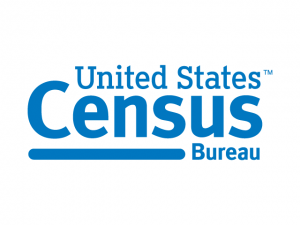Census Data
What is the Census and why does it matter? What is the difference between the Decennial Census and the American Community Survey? Learn the answers to these questions and much more in our Census 101- What It Is and Why It Matters article.
2020 Census Participant Statistical Areas Survey
Preparations for the 2020 Decennial Census are ramping up, and involves participation from many partnering organizations including CDRPC. CDRPC has been identified as a partner by the Census Bureau to administer the Participant Statistical Areas Program (PSAP). This program allows for input from stakeholder and users of census data to help shape and define the areas and boundaries that are used by the Bureau to count and carry out the Census.
For municipalities looking to participate in the PSAP process, materials can be found here »
2010 Census
 CDRPC has published the 2010 Census data in various forms on this site. The first release from the Census Bureau is detailed population data by race and Hispanic origin for redistricting purposes. The PL94 data are available down to the Block level (Census Geographic Hierarchy: Census Tract, Block Group, Block). Or visit the 2010 Census website.
CDRPC has published the 2010 Census data in various forms on this site. The first release from the Census Bureau is detailed population data by race and Hispanic origin for redistricting purposes. The PL94 data are available down to the Block level (Census Geographic Hierarchy: Census Tract, Block Group, Block). Or visit the 2010 Census website.
2000 Census
CDRPC has published 2000 Census data in various forms on this site. The first release from the Census Bureau was detailed population data by race and Hispanic origin for redistricting purposes. The PL94 data are available down to the Block level (Census Geographic Hierarchy: Census Tract, Block Group, Block). The second major release, SF1, contains the 100% count data (i.e., data from the short form questionnaires which everyone received) down to the Block level for general items and to the Census Tract level for data by detailed racial and ethnic classifications. The third major release, SF3, contains detailed social, economic, and housing data estimated from the results of the long Census form, which approximately one in six persons received.
1990 Census
Please contact CDRPC for assistance with 1990 Census data.
Accessing Census Data
While CDRPC publishes a selection of Census data for the Capital Region, the Census Bureau makes a wide variety of data available through their website:
- 2000 and 2010 Decennial Census data
- American Community Survey Data (1-, 3-, and 5-year estimates as available)
- 2002 and 2007 Economic Census
- Population Estimates
- Annual Economic Surveys: Annual Survey of Manufacturers, Business Patterns, and Nonemployer Statistics.
Directions on how to access Census data from the Census website via American FactFinder2 for county and tract level data for one of the four counties in the Capital Region are provided below. These same general directions can be applied to access data for other geographies such as minor civil divisions.
Below is a list of table IDs and names that supply the most frequently-requested from the Decennial Census and American Community Survey data. In general, it is often easiest to check the demographic profiles first, as they are presented in a user-friendly format. The Census profiles for the minor civil divisions in the Capital Region may be found on our website. For more specific data, use the tables listed below.
Decennial Census (2010 Census, 2000 Census)
P1: Total Population
P3: Race
P4: Hispanic or Latino Origin
P12: Sex By Age
P19: Household Size by Household Type by Presence of Own Children
H3: Occupancy Status
H4: Tenure
American Community Survey
B15002: Sex by Educational Attainment for the Population 25+
B19001: Household Income in the Past 12 Months (In 2010 Inflation-Adjusted Dollars)
B19013: Median Household Income in the Past 12 Months (In 2010 Inflation-Adjusted Dollars)
B17001: Poverty Status in the Past 12 Months By Sex By Age
B08301: Means of Transportation to Work
B25064: Median Gross Rent
B25070: Gross Rent as a Percentage of Household Income in the Past 12 Months
B25075: Value (value of owner-occupied housing units)
B25091: Mortgage Status by Selected Monthly Owner Costs as a Percentage of Household Income in the Past 12 Months